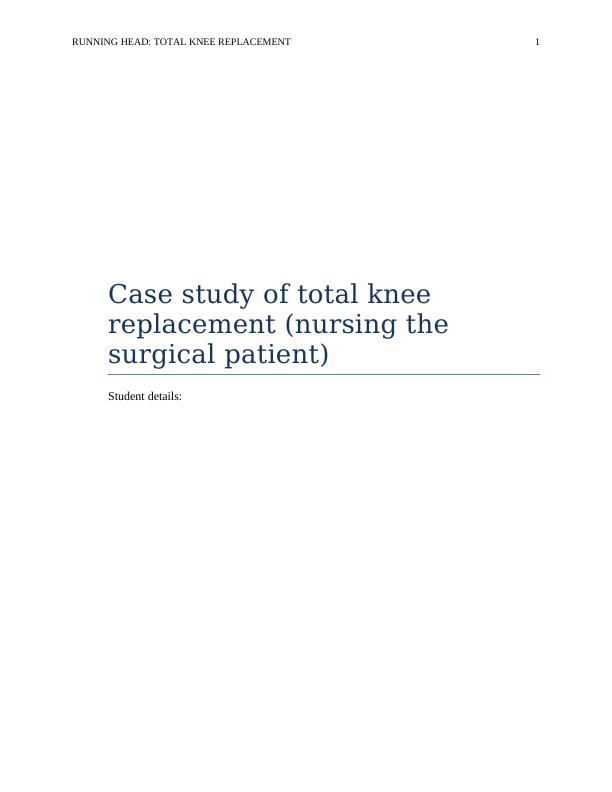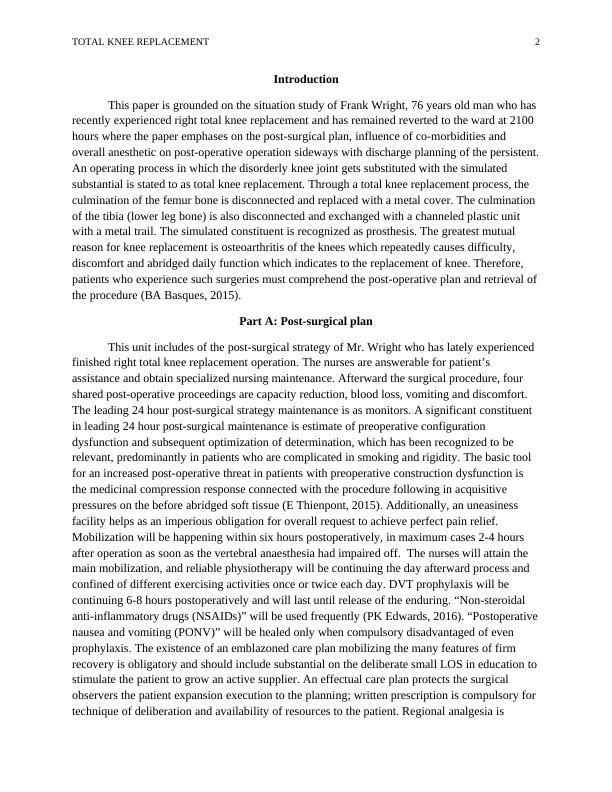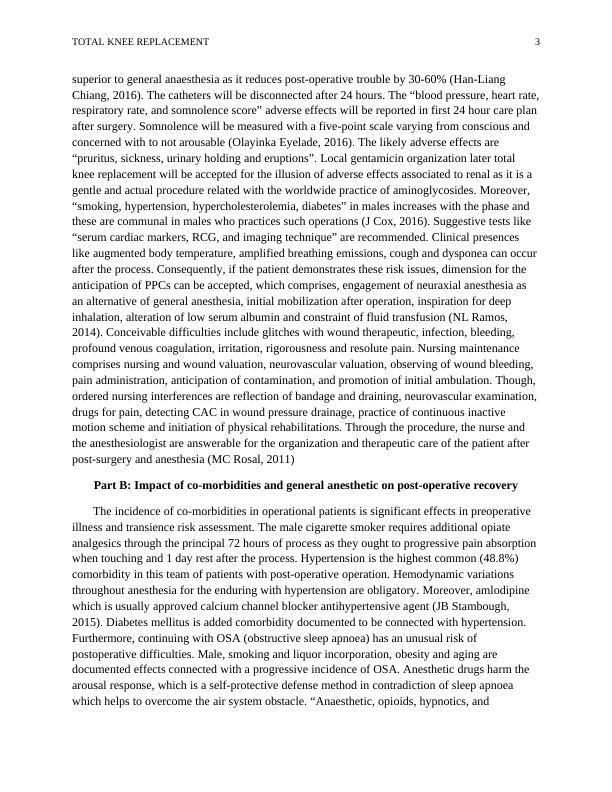Case Study of Total Knee Replacement
This assignment requires you to consider the case scenario of Frank Wright, who has undergone a right total knee replacement. You will write an academic essay applying the principles of surgery, consideration of patient co-morbidities, and implementing nursing actions to identify, assess, and prevent potential clinical issues.
Added on 2023-01-05
About This Document
Case Study of Total Knee Replacement
This assignment requires you to consider the case scenario of Frank Wright, who has undergone a right total knee replacement. You will write an academic essay applying the principles of surgery, consideration of patient co-morbidities, and implementing nursing actions to identify, assess, and prevent potential clinical issues.
Added on 2023-01-05
End of preview
Want to access all the pages? Upload your documents or become a member.



